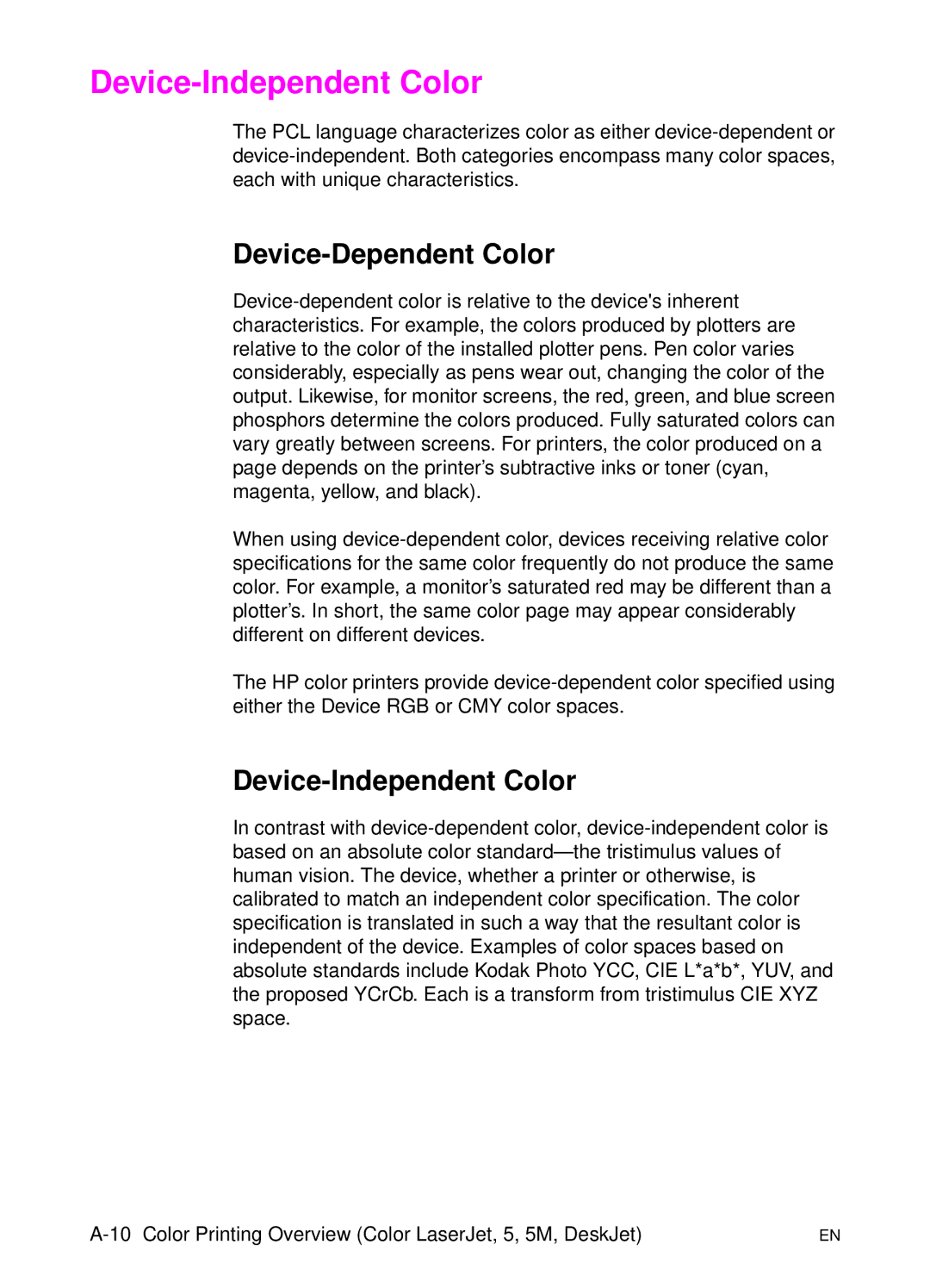Device-Independent Color
The PCL language characterizes color as either device-dependent or device-independent. Both categories encompass many color spaces, each with unique characteristics.
Device-Dependent Color
Device-dependent color is relative to the device's inherent characteristics. For example, the colors produced by plotters are relative to the color of the installed plotter pens. Pen color varies considerably, especially as pens wear out, changing the color of the output. Likewise, for monitor screens, the red, green, and blue screen phosphors determine the colors produced. Fully saturated colors can vary greatly between screens. For printers, the color produced on a page depends on the printer’s subtractive inks or toner (cyan, magenta, yellow, and black).
When using device-dependent color, devices receiving relative color specifications for the same color frequently do not produce the same color. For example, a monitor’s saturated red may be different than a plotter’s. In short, the same color page may appear considerably different on different devices.
The HP color printers provide device-dependent color specified using either the Device RGB or CMY color spaces.
Device-Independent Color
In contrast with device-dependent color, device-independent color is based on an absolute color standard—the tristimulus values of human vision. The device, whether a printer or otherwise, is calibrated to match an independent color specification. The color specification is translated in such a way that the resultant color is independent of the device. Examples of color spaces based on absolute standards include Kodak Photo YCC, CIE L*a*b*, YUV, and the proposed YCrCb. Each is a transform from tristimulus CIE XYZ space.
